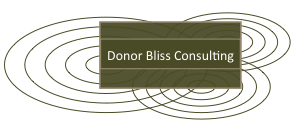by Simon Sinek

I first read this book several years ago and it has been a favorite since. I note the price sticker on my copy is from Dymocks, so I first read it in Melbourne, Australia.
It may be a dumb question, but I always ask people what they thought of it. I find that just because I love a book does not mean everyone else will. The first comment from a member of our nonprofit leaders book club was from someone who thought it contained too much theory and very little about how to do this. Another person did not like the first story about JFK or Hitler. She felt it started everything with deception. Fair comments and off went the discussion to what we could apply within our own organizations.
By now, Sinek’s insight about the Golden Circle is well known. Understanding Why is where it all starts. I find that most nonprofits do this well. An organization’s mission states WHY it exists. Mission provides the clarity of purpose that a nonprofit requires to begin to be effective. Mission attracts employees, volunteers and donors.
Yet, I find gold in this book. The chapter on Manipulation and Inspiration is an example. In the nonprofit world, we see a big division between donor-centric fundraising and transactional fundraising. It is described as whether we use manipulation or inspiration. A former boss used to tell me, “No one ever bought a Buick because they felt sorry for General Motors.” This to me sums up the necessity of appealing to a higher cause that we can all join to make happen. This is inspiration and it is sustainable.
Jim Collins points out that all great organization’s are excellent at the discipline of how they are run. This is what Sinek calls the How. He stresses the importance of getting Why, How and What in the right order and in appropriate balance.
Sinek effectively make the case as to how taking actions and doing business in line with WHY is the foundation of trust. It is consistent and makes it easier to find others who believe what we believe. The book club also found his use of the Innovation Diffusion Curve was a good description of where fundraisers should spend their time. Those farthest to the right (late adapters and laggards) are also the worst clients and customers and donors. They don’t believe in our WHY. To them, a gift or involvement is a transaction.
This quote stood out, “For a message to have real impact, to affect behavior and seed loyalty… it needs to publicize some higher purpose, cause or believe to which those with similar values and beliefs can relate.” Surely this is what good case statements do. It is what good development officers do when they relate the mission and vision of their organization in a way that inspires donors to join and support the cause.
The insights about starting with Why and how that method is about inspiration, not manipulation, are very much in line with best practices in nonprofit organizations. They are worth reading and applying to our work. At the same time, the comments about the lack of how to do this are apt. There is very little about how to find our Why. To me, there could have been less about Apple (an excellent example, but we got tired reading about how exemplary they are) and more about how to find and implement our why.
That said, this is a seminal book and worth a read by any nonprofit leader. In our work, it is critical that we know and communicate our Why. This allows us to attract others with a similar interest and who want to work together.
Eric Billman
Most leaders start by talking about what their organization does. But Sinek argues it’s not the what or the how that drives great staff candidates, five-star board prospects or donors. It’s the why. Sinek gave a great TED talk if you don’t have time to read the full book.
Recommended by Joan Garry Consulting

Very nicely put together , enjoyed the post.
Being a very big fan of Simon Sinek the post resonated with me….
As a follow up to the concept of “WHY” I did read the book named “FIND YOUR WHY”.
This book is a must for those who want to known their own WHY.The concepts provided in the book to explore our WHY is truly fascinating.
I happened to write a blog on the steps to WHY discovery as mentioned in the book.
Hope this spreads a word of motivation around.
https://wordpress.com/post/viewpointsunplugged.wordpress.com/238
LikeLike